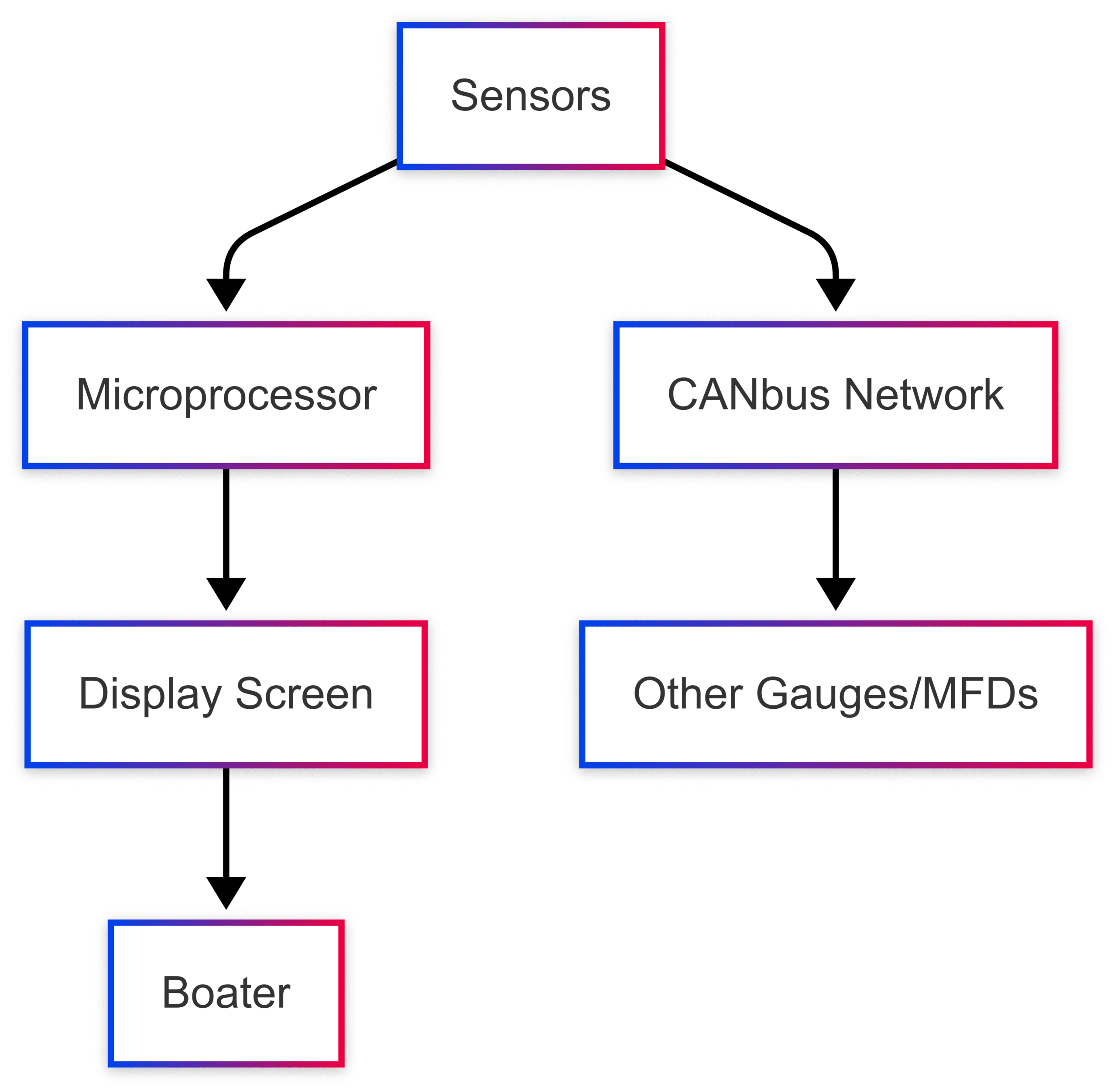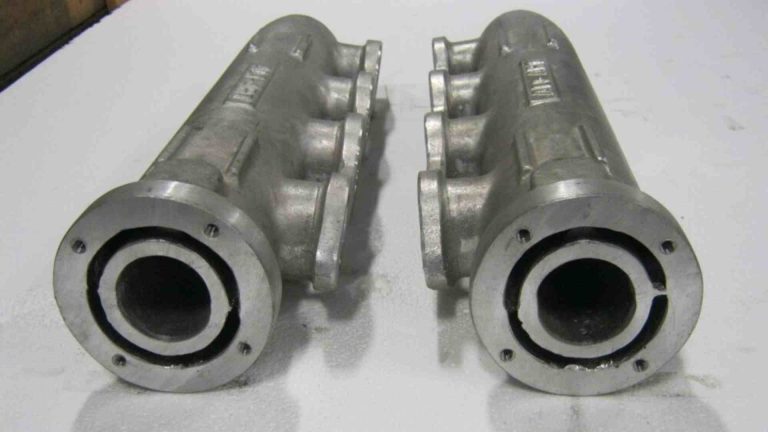Digital Boat Gauges: How They Work And Why You Should Get One
Marine gauges are critical for monitoring a boat’s performance, ensuring safety, and preventing costly repairs. From tracking engine health to navigating safely through shallow waters, these instruments provide real-time data on vital parameters like speed, fuel levels, and oil pressure. Among the options available, digital boat gauges have gained popularity for their precision, versatility, and modern design. This comprehensive guide explores how digital boat gauges work, their advantages over analog counterparts, the essential gauges every boat should have, and why upgrading to digital is a smart choice for boaters.
What Are Marine Gauges?
Marine gauges are instruments that monitor and display critical data about a boat’s systems, such as engine performance, fuel levels, battery status, and environmental conditions. They present this information on either a dial (analog) or a screen (digital), enabling boaters to make informed decisions for safe and efficient operation. Without these gauges, operators would lack the insights needed to maintain their vessel’s health or navigate challenging waters.
Marine gauges are designed to withstand harsh marine environments, including exposure to water, salt, and vibrations. Whether you’re outfitting a new vessel or upgrading an older one, choosing the right gauges can enhance both functionality and aesthetics.
Analog vs. Digital Marine Gauges: A Detailed Comparison
Marine gauges come in two primary types: analog and digital. Each has distinct characteristics, benefits, and drawbacks. Understanding these differences is crucial when deciding which type best suits your boating needs.
Analog Marine Gauges
Analog gauges are the traditional choice, featuring mechanical components like needles and dials to display data. They have been a staple in the marine industry for decades and continue to evolve with features like LED backlighting.
Advantages of Analog Gauges:
- No Power Dependency: Analog gauges operate without an external power source, ensuring functionality during electrical failures.
- Ease of Interpretation: The needle’s position on a dial provides an intuitive, at-a-glance understanding of whether readings are within safe ranges. For example, a needle in the “red zone” instantly signals a problem.
- Mature Technology: Technicians are familiar with analog systems, making repairs straightforward. Each gauge operates independently, so a single failure doesn’t affect others.
- Cost-Effective: Analog gauges are generally cheaper to purchase and replace than digital ones.
Disadvantages of Analog Gauges:
- Mechanical Complexity: Moving parts are prone to wear, especially in high-vibration environments, leading to potential inaccuracies or failures.
- Limited Data Display: Each gauge typically monitors a single parameter, which can clutter the dashboard.
- Susceptibility to Vibration: Needle bounce in rough seas can make readings less reliable.
Digital Marine Gauges
Digital gauges use electronic sensors and microprocessors to convert data into numeric or graphical displays on screens. They are favored for their modern aesthetics and advanced functionality, often integrating with onboard systems like GPS or engine control modules.
Advantages of Digital Gauges:
- Precision and Accuracy: Digital gauges provide precise, real-time data unaffected by vibrations, offering reliable readings in challenging conditions.
- Multi-Functionality: Many digital gauges display multiple parameters on a single screen, reducing dashboard clutter. For example, a multifunction gauge can show speed, fuel level, and engine RPM simultaneously.
- Customizability: Users can configure displays to prioritize critical data, with options for analog-style dials or numerical readouts.
- Ease of Installation: Plug-and-play designs simplify setup, often connecting via networks like NMEA 2000 or CANbus.
- Durability: With fewer moving parts, digital gauges are less prone to mechanical failure. High-quality models use materials like stainless steel and scratch-resistant glass.
- Visibility: LED backlighting and anti-glare screens ensure readability in both daylight and nighttime conditions.
Disadvantages of Digital Gauges:
- Power Dependency: Digital gauges require a power source, making them vulnerable to electrical failures unless backed by redundant systems.
- Higher Cost: Initial costs are higher, and repairs may require specialized expertise.
- Learning Curve: Numeric displays may require more interpretation than analog dials, especially for boaters accustomed to traditional gauges.
Comparison Table: Analog vs. Digital Marine Gauges
| Feature | Analog Gauges | Digital Gauges |
|---|---|---|
| Power Requirement | None | Requires power source |
| Accuracy | Moderate, affected by vibration | High, unaffected by vibration |
| Data Display | Single parameter per gauge | Multiple parameters on one screen |
| Durability | Prone to mechanical wear | Fewer moving parts, more durable |
| Cost | Lower | Higher |
| Readability | Intuitive needle movement | Customizable, LED-lit displays |
| Installation | More wiring, complex | Plug-and-play, networked |
How Digital Boat Gauges Work
Digital boat gauges operate by collecting data from sensors placed throughout the boat’s systems, such as the engine, fuel tank, or water environment. These sensors measure parameters like temperature, pressure, or speed and convert them into electrical signals. A microprocessor processes these signals and displays the data on a screen, either as numbers, graphs, or analog-style dials.
There are three main types of digital gauges:
- Digital-Analog Gauges: These use sensors to measure parameters like temperature or pressure and display them in a digital format, often mimicking analog dials for familiarity.
- Digital-Digital Gauges: These directly measure data (e.g., flow or oxygen levels) using advanced sensors, offering high precision without mechanical components.
- CANbus Gauges: These connect to a Controller Area Network (CANbus) system, allowing multiple gauges to share data across a single network, reducing wiring and enabling integration with other electronics.
Digital gauges often adhere to standards like NMEA 2000, ensuring compatibility with modern marine electronics. For example, a digital tachometer might connect to an engine’s electronic control module (ECM) to display RPMs while also sharing fuel flow data with a multifunction display (MFD).
Chart: Digital Gauge Data Flow

This chart illustrates how sensors collect data, which is processed and displayed, with the option to share information across a network for enhanced functionality.
Essential Marine Gauges for Your Boat
While boats can be equipped with numerous gauges, certain ones are indispensable for safety and performance. Below is a curated list of essential gauges, their functions, and why they matter.
- Depth Finder Gauge
- Function: Measures water depth beneath the boat.
- Importance: Prevents grounding and collisions with underwater obstacles like rocks or reefs.
- Example Product: Garmin GSD 26 Digital Sonar ($1,999)
- Price Range: $200–$2,000
- Fuel Level Gauge
- Function: Tracks fuel tank levels.
- Importance: Ensures you don’t run out of fuel, avoiding stranding.
- Example Product: KUS Fuel Level Gauge ($50–$150)
- Price Range: $30–$200
- Hour Meter Gauge
- Function: Logs engine running time.
- Importance: Schedules maintenance tasks like oil changes and supports resale value documentation.
- Example Product: Sierra Hour Meter ($40–$100)
- Price Range: $30–$150
- Multifunction Gauge
- Function: Combines multiple readings (e.g., speed, fuel, RPM) on one screen.
- Importance: Reduces dashboard clutter and simplifies monitoring.
- Example Product: Mercury SC1000 ($300–$600)
- Price Range: $200–$1,000
- Oil Pressure Gauge
- Function: Monitors engine and transmission oil pressure.
- Importance: Detects oil pump issues or leaks, preventing engine damage.
- Example Product: Faria Beede Oil Pressure Gauge ($50–$150)
- Price Range: $40–$200
- Speedometer Gauge
- Function: Measures boat speed in MPH or knots.
- Importance: Helps maintain safe speeds for conditions.
- Example Product: Lowrance Digital Speedometer ($100–$300)
- Price Range: $50–$400
- Tachometer Gauge
- Function: Measures engine RPMs.
- Importance: Ensures optimal engine performance and supports WOT tests.
- Example Product: Mercury SC100 Tachometer ($200–$500)
- Price Range: $50–$600
- Trim Gauge
- Function: Displays motor trim/tilt angle.
- Importance: Adjusts trim tabs for balance and efficiency.
- Example Product: KUS Trim Gauge ($40–$120)
- Price Range: $30–$150
- Voltmeter Gauge
- Function: Monitors battery voltage.
- Importance: Warns of low battery levels, preventing starting issues.
- Example Product: Blue Sea Systems Voltmeter ($50–$150)
- Price Range: $30–$200
- Water Temperature Gauge
- Function: Tracks engine cooling system temperature.
- Importance: Prevents overheating by detecting cooling system failures.
- Example Product: KUS Water Temperature Gauge ($40–$150)
- Price Range: $30–$200
Table: Essential Marine Gauges and Specifications
| Gauge Type | Function | Key Benefit | Price Range | IP Rating |
|---|---|---|---|---|
| Depth Finder | Measures water depth | Prevents grounding | $200–$2,000 | IP67 |
| Fuel Level | Tracks fuel levels | Avoids fuel shortages | $30–$200 | IP67 |
| Hour Meter | Logs engine hours | Schedules maintenance | $30–$150 | IP65–IP67 |
| Multifunction | Displays multiple parameters | Reduces clutter | $200–$1,000 | IP67 |
| Oil Pressure | Monitors oil pressure | Detects engine issues | $40–$200 | IP67 |
| Speedometer | Measures speed | Ensures safe operation | $50–$400 | IP67 |
| Tachometer | Measures RPMs | Optimizes engine performance | $50–$600 | IP67 |
| Trim Gauge | Displays trim angle | Improves boat balance | $30–$150 | IP67 |
| Voltmeter | Monitors battery voltage | Prevents battery failure | $30–$200 | IP67 |
| Water Temperature | Tracks coolant temperature | Prevents overheating | $30–$200 | IP67 |
Why Choose Digital Boat Gauges?
Digital boat gauges offer compelling advantages that make them a worthwhile investment for modern boaters. Here’s why you should consider upgrading:
1. Enhanced Accuracy and Reliability
Digital gauges deliver precise, real-time data unaffected by vibrations or mechanical wear. For example, a digital oil pressure gauge provides exact readings, whereas an analog gauge’s needle may fluctuate in rough seas.
2. Streamlined Dashboard Design
By consolidating multiple parameters onto a single screen, digital gauges reduce dashboard clutter. A multifunction gauge like the Mercury SC1000 can display speed, RPM, and fuel levels simultaneously, freeing up space for other instruments.
3. Integration with Modern Systems
Digital gauges integrate seamlessly with technologies like NMEA 2000, CANbus, and SmartCraft, enabling data sharing across MFDs, GPS units, and autopilots. This connectivity enhances navigation and engine management.
4. Customization and Flexibility
Boaters can tailor digital displays to show only the most relevant data, with options for analog-style dials, numerical readouts, or graphical charts. User-configurable alerts provide early warnings of issues like low fuel or high engine temperature.
5. Durability in Harsh Environments
High-quality digital gauges feature IP67 ratings, protecting against dust and water immersion. Materials like stainless steel and anti-fogging glass ensure longevity, even in salty, humid conditions.
6. Advanced Features
Digital gauges often include features like SmartTow for wakesurfing, GPS-enabled location tracking, or fish-finding capabilities. For example, the Mercury SC1000 tachometer supports Troll Control for precise low-speed cruising.
Chart: Benefits of Digital Gauges

Pros and Cons of Digital Boat Gauges
Pros
- Accuracy: Superior precision compared to analog gauges.
- Versatility: Display multiple parameters on one screen.
- Integration: Connects with GPS, autopilots, and engine systems.
- Durability: Fewer moving parts and robust materials.
- Visibility: LED backlighting for day/night readability.
- Customizability: Tailored displays and alerts.
Cons
- Power Dependency: Requires a reliable power source.
- Cost: Higher upfront and repair costs.
- Complexity: May require technical expertise for troubleshooting.
- Interpretation: Numeric displays may need more mental processing than analog dials.
Choosing the Right Digital Gauge for Your Boat
Selecting the best digital gauge depends on your boat type, engine configuration, and boating activities. Here are key considerations:
- Boat Type: Powerboats with dual engines may benefit from multifunction gauges like the KUS KMG-42T, while sailboats might prioritize wind speed or depth gauges.
- Engine Compatibility: Ensure gauges support your engine’s protocol (e.g., J1939, NMEA 2000). For example, Mercury engines pair well with SmartCraft-compatible gauges.
- IP Rating: Look for IP67-rated gauges to withstand marine conditions.
- Budget: Basic digital gauges start at $30, while advanced multifunction displays can exceed $1,000.
- Features: Consider extras like GPS, fish finders, or SmartTow for specific activities.
Popular Digital Gauge Models
- Mercury SC1000 ($300–$600): SmartCraft-compatible tachometer/speedometer with SmartTow.
- Garmin GSD 26 ($1,999): Digital sonar for depth and fish finding.
- KUS KMG-42T ($400–$800): Multifunction gauge for NMEA 2000 systems.
- Lowrance Digital Speedometer ($100–$300): GPS-enabled speed tracking.
Maintenance Tips for Digital Boat Gauges
To ensure longevity, digital gauges require regular maintenance:
- Cleaning: Use soap, water, and a microfiber cloth to clean screens, avoiding abrasive materials.
- Inspection: Check for loose connections or corrosion in wiring.
- Software Updates: Install firmware updates to maintain compatibility and performance.
- Protection: Use covers to shield gauges from UV exposure when not in use.
Community Insights: Analog vs. Digital Debate
Boaters often debate the merits of analog versus digital gauges. A discussion on a boating forum revealed diverse perspectives:
- Pro-Digital (Moonlighter475): Advocates for digital gauges cite their accuracy, data richness, and configurable alerts. Multiple MFDs provide redundancy, mitigating power failure concerns.
- Pro-Analog (coores14): Analog enthusiasts value the intuitive “at-a-glance” readability of needles, especially in critical situations where quick interpretation is key.
- Hybrid Approach (1blueheron): Some boaters retain analog gauges for critical systems (e.g., fuel, battery) as backups while using digital MFDs for comprehensive data.
This debate underscores the importance of aligning gauge choices with personal preferences and operational needs.
Custom Digital Gauges: A Tailored Solution
For boaters with unique requirements, custom digital gauges offer a perfect fit. Companies like KUS and Bamboo Apps provide bespoke solutions, such as:
- Hybrid Gauges: Combine analog and digital inputs for older engines.
- Aesthetic Customization: Match bezels and displays to your boat’s design.
- Proprietary Platforms: Use systems like Parker Hannifin’s iQAN for advanced interfaces.
A case study by Bamboo Apps involved creating a custom UI for electric vessels using the iQAN platform. The interface integrated CANbus data, allowing operators to monitor charging, settings, and maintenance schedules seamlessly.
Comparison Table: iQAN vs. Android for Custom Gauges
| Feature | iQAN Platform | Android Platform |
|---|---|---|
| Hardware | Proprietary, Parker-specific | Open, supports various devices |
| Flexibility | Limited to iQAN hardware | Highly flexible, widely compatible |
| Development | Specialized, brand-specific | Open-source, cost-effective |
| Customization | High, tailored to client needs | Extensive, supports diverse UIs |
| Cost | Higher due to proprietary nature | Lower, leverages existing tech |
Conclusion
Digital boat gauges are a game-changer for modern boating, offering unmatched accuracy, versatility, and integration with advanced marine systems. Whether you’re monitoring engine performance, navigating shallow waters, or optimizing wakesurfing conditions, these gauges provide the data needed for safe and efficient operation. While analog gauges remain a reliable, cost-effective option, digital gauges excel in precision, durability, and customization, making them ideal for most boaters.
When choosing gauges, consider your boat’s needs, engine compatibility, and budget. Invest in high-quality, IP67-rated models from reputable brands like Mercury, Garmin, or KUS to ensure performance in harsh marine environments. For a tailored solution, explore custom gauges that blend functionality with your vessel’s aesthetic.
Upgrade to digital boat gauges to streamline your dashboard, enhance safety, and elevate your boating experience. Visit a marine dealer or contact manufacturers like KUS for expert guidance on selecting the perfect gauges for your vessel.
Happy Boating!
Share Digital Boat Gauges: How They Work And Why You Should Get One with your friends and leave a comment below with your thoughts.
Read Boat Propeller Clip Art Images 4K HD Wallpapers until we meet in the next article.






